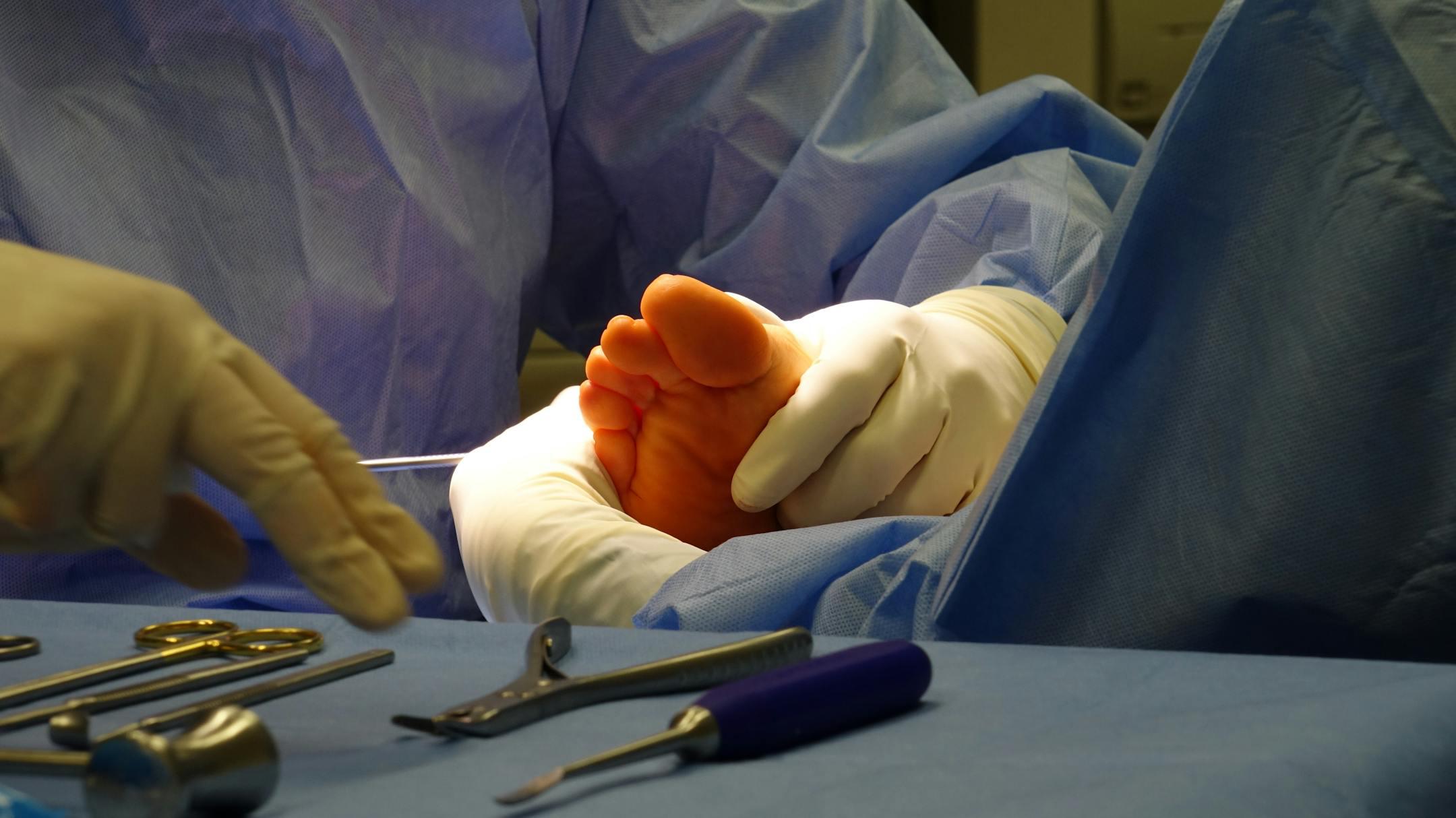
Recovering from foot or ankle surgery can feel like a long and challenging journey. Whether you're coming off a procedure to treat an injury from a winter slip or a spring sprain, comfort during your recovery is essential. You want to heal quickly, but you also want to make sure that you’re staying as comfortable as possible along the way. Fortunately, there are some strategies you can employ to minimize discomfort and make your recovery smoother.
If you’ve recently had foot or ankle surgery, don’t worry. We’ve gathered five essential tips to help you stay comfortable as you navigate the healing process. Whether you're dealing with a cast, swelling, or other post-surgery concerns, these tips are tailored to give you the best chance at a successful and pain-free recovery.
If you've had a cast applied to your foot or ankle, you know how difficult it can be to get comfortable. Casts can rub against your skin, leading to irritation, discomfort, and even sores. One of the simplest solutions to this problem is to use moleskin for cast protection. Moleskin is a soft, cushioned material that you can easily apply to areas where your cast might be causing friction.
By lining the inside of your cast with moleskin, you reduce the chances of irritating your skin. It creates a protective barrier that prevents rubbing and provides extra comfort. Moleskin for cast protection is a quick, inexpensive way to make your recovery more comfortable and keep your skin intact while healing.
One of the best ways to manage swelling and reduce discomfort during recovery is by elevating your foot or ankle. Swelling is a common side effect after surgery, and elevating your foot can help prevent excess fluid buildup, which can lead to pain and prolonged healing.
Try to elevate your foot above the level of your heart whenever you’re resting. This can be as simple as propping your foot on pillows while you sit or lie down. Not only will this help with swelling, but it can also give you a sense of relief after a long day of managing pain and discomfort.
Cold compresses can be your best friend in the days following surgery. Ice or cold packs can help reduce inflammation, ease pain, and keep swelling in check. Whether you’re dealing with a sprained ankle, a tendon tear, or recovery from a more invasive surgery, applying cold therapy periodically can make a noticeable difference.
For best results, apply cold packs to the affected area for 15-20 minutes at a time, making sure to wrap the cold pack in a towel to prevent direct contact with the skin. While cold therapy isn’t a permanent solution, it can significantly alleviate your discomfort and help you feel more comfortable as your body works to heal.
Pain management is a crucial part of the recovery process after foot or ankle surgery. Don’t wait until you’re in significant pain to take your medication—be proactive in managing your comfort. Your doctor will provide you with specific instructions on pain relief, which may include prescription painkillers or over-the-counter anti-inflammatory medications.
In addition to medications, consider incorporating relaxation techniques into your daily routine. Deep breathing exercises or mindfulness techniques can help your body relax and reduce the perception of pain. When you combine both physical and mental relaxation, you’ll find that your recovery process is much easier to navigate.
After surgery, it can be tempting to jump back into your regular routine, especially if you’re feeling well enough to move around. However, overexerting yourself too soon can hinder your recovery and potentially lead to complications.
It's important to follow your surgeon’s instructions about when to start bearing weight on the injured foot and when you can begin to engage in light activities. Even if you’re eager to get back to normal life, remember that taking things slow is key to long-term healing. If you’re feeling antsy, try focusing on upper body workouts or other activities that don’t strain your foot or ankle.
Another essential aspect of staying comfortable after surgery is ensuring that you have the right footwear. If your surgery involved any kind of immobilization, you may need special shoes or boots that protect your foot or ankle while you heal. These specially designed shoes help with stability, comfort, and alignment during your recovery.
When it's time to transition out of the cast or boot, invest in footwear that supports your foot and ankle, particularly if you have any lingering weakness. Opt for shoes with a sturdy sole and proper arch support to ensure that you’re taking care of your foot in the long term.
Recovering from foot or ankle surgery doesn’t have to be a painful or uncomfortable process. With these tips, including using moleskin for cast protection, elevating your foot, using cold compresses, staying on top of pain management, and avoiding overexertion, you can stay comfortable and heal more effectively. Keep in mind that healing takes time, and by following the guidance of your healthcare provider, you can ensure that you are on the right track to recovery.
If you're experiencing foot or ankle issues and need personalized advice or advanced treatment options, Dr. Selene Parekh and his clinic in NJ and PA offer cutting-edge techniques and technologies to address a wide range of foot and ankle disorders. Whether you're recovering from surgery or managing a chronic condition, you can trust in the expertise that Dr. Parekh brings to every patient’s care.
Are you ready to take the next step in your recovery? Reach out to us today to learn more about the innovative treatments available to help you get back on your feet.